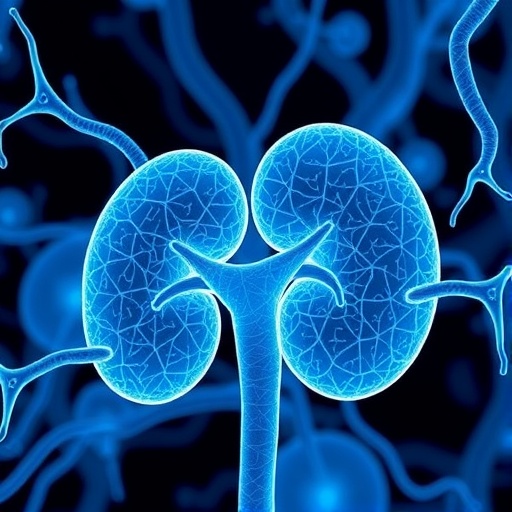Houston, TX (November 7, 2025) — Emerging research challenges the long-standing assumption that primary glomerular diseases in children and young adults are inherently benign. Contrary to conventional wisdom, new data indicate that these younger populations may, in fact, experience a more rapid decline in kidney function compared to their older counterparts. These pivotal findings were unveiled at ASN Kidney Week 2025, the eminent global nephrology congress held from November 5 to 9 in Houston, TX.
The study, leveraging data from CureGN — one of the largest and most comprehensive longitudinal cohorts focusing on glomerular diseases — sought to elucidate age-related differences in disease trajectories. Primary glomerular diseases in question encompass a spectrum of pathologies including minimal change disease (MCD), focal segmental glomerulosclerosis (FSGS), membranous nephropathy (MN), and IgA nephropathy (IgAN). Historically, much of the literature has lacked direct, head-to-head comparisons between pediatric and adult patient outcomes, leaving a gap in understanding the true disease burden across the lifespan.
Through meticulous examination of kidney function decline rates via estimated glomerular filtration rate (eGFR) measurements, along with composite outcome analysis—incorporating kidney failure, a ≥40% reduction in eGFR, or mortality—researchers identified that adverse renal outcomes are not confined to older adults. In specific subsets of youth and young adults, the risk profile was comparable to or even exceeded that observed in older populations. This revelation signifies a paradigm shift in how clinicians and researchers conceptualize disease progression in younger cohorts.
Notably, pediatric patients diagnosed with MCD demonstrated significantly steeper slopes of eGFR decline compared to adults with the same diagnosis. This is particularly striking considering MCD’s classical characterization as a relatively benign, steroid-responsive nephropathy predominantly affecting children. Contrariwise, in this investigation, children showed an unexpectedly aggressive trajectory warranting closer clinical scrutiny and potential therapeutic re-evaluation.
Further age-stratified analyses revealed that MN patients within the adolescent bracket (13–17 years) and young adults aged 18–44 with FSGS or IgAN exhibited the most precipitous declines in eGFR within their respective diagnostic categories. These findings imply developmental or immunological factors inherent to these younger age groups may influence disease pathophysiology and progression speed, demanding age-adapted management protocols that diverge from those crafted solely on adult data.
Intriguingly, when assessing the risk of progression to the composite end-point of death, kidney failure, or significant eGFR decline, no substantial inter-age differences emerged among MCD, FSGS, and MN patients. However, discrepancies were present in IgAN populations. Children aged 6–12 years, adolescents 13–17 years, and elder adults 45–64 years exhibited relatively lower progression risks compared to the young adult subgroup (18–44 years), which faced heightened vulnerability. Such nuanced findings highlight the heterogeneity of glomerular disease behavior and the necessity for tailored surveillance across distinct age demographics.
The study’s lead author, Margaret Helmuth, MS, from the University of Michigan, emphasized the vital clinical implications of these results. She remarked that children and young adults diagnosed with primary glomerular diseases via biopsy face significant, lifelong threats of renal failure necessitating dialysis or transplantation. This stark reality underscores an urgent need to better characterize the longitudinal burden and morbidity these diseases impose on younger patients throughout their lifespans.
Co-author Chia-shi Wang, MD, MSc, of the Emory University School of Medicine, stressed the critical importance of including pediatric populations in clinical trials targeting glomerular diseases. Historically underrepresented in trial enrollment, children must be given adequate consideration in therapeutic development to mitigate their disproportionate risk and improve health outcomes tailored to their unique disease courses.
Pathophysiologically, these findings challenge previous models that presumed relative renal resilience in younger patients with primary glomerulopathies. The study suggests that factors such as ongoing immune dysregulation, developmental kidney biology, or genetic predispositions may contribute to accelerated injury and fibrosis processes in these populations. Understanding these mechanisms at a molecular level could pave the way for novel, age-specific therapeutic targets.
Moreover, this data brings to light the potential necessity for revisiting clinical practice guidelines and monitoring strategies in pediatric nephrology. Earlier, more frequent assessment of eGFR, incorporation of biomarker panels, and proactive interventions may be prerequisites to altering the disease trajectory in young patients, thus averting early onset of end-stage renal disease (ESRD).
The longitudinal nature of the CureGN cohort offers a unique vantage point from which to observe disease progression over extended periods, providing robust evidence beyond snapshot observations. Its size and diversity enhance the generalizability of the findings, which are crucial for informing both clinical and research paradigms worldwide.
In the context of global nephrology, these findings contribute to a growing awareness that kidney diseases previously regarded as indolent in youth demand heightened vigilance. The lifetime health implications of early-onset glomerular disease—including quality of life, psychosocial impact, and economic burden—are vast, necessitating multi-disciplinary strategies encompassing prevention, early diagnosis, and innovative treatment.
As ASN Kidney Week 2025 continues to foster dialogues among approximately 12,000 kidney health professionals from around the world, this research embodies the cutting edge of nephrology: advancing understanding from bench to bedside and reshaping future approaches. The incorporation of youth-centric data into clinical trials and treatment frameworks represents a crucial step toward equitable and efficacious kidney care across all ages.
Subject of Research: Primary glomerular diseases and their progression in pediatric and young adult populations compared to older adults.
Article Title: Glomerular Disease Outcomes Across the Lifespan: Insights from the CureGN Research Consortium
News Publication Date: November 7, 2025
Web References:
– American Society of Nephrology (ASN) website: www.asn-online.org
– ASN Kidney Week 2025: https://www.asn-online.org/education/kidneyweek/
Keywords: Primary Glomerular Disease, Pediatric Nephrology, Adults vs. Children Kidney Outcomes, eGFR Decline, Minimal Change Disease, Focal Segmental Glomerulosclerosis, Membranous Nephropathy, IgA Nephropathy, CureGN Cohort, Kidney Failure Risk, Kidney Disease Progression, Clinical Trials in Pediatric Nephrology




